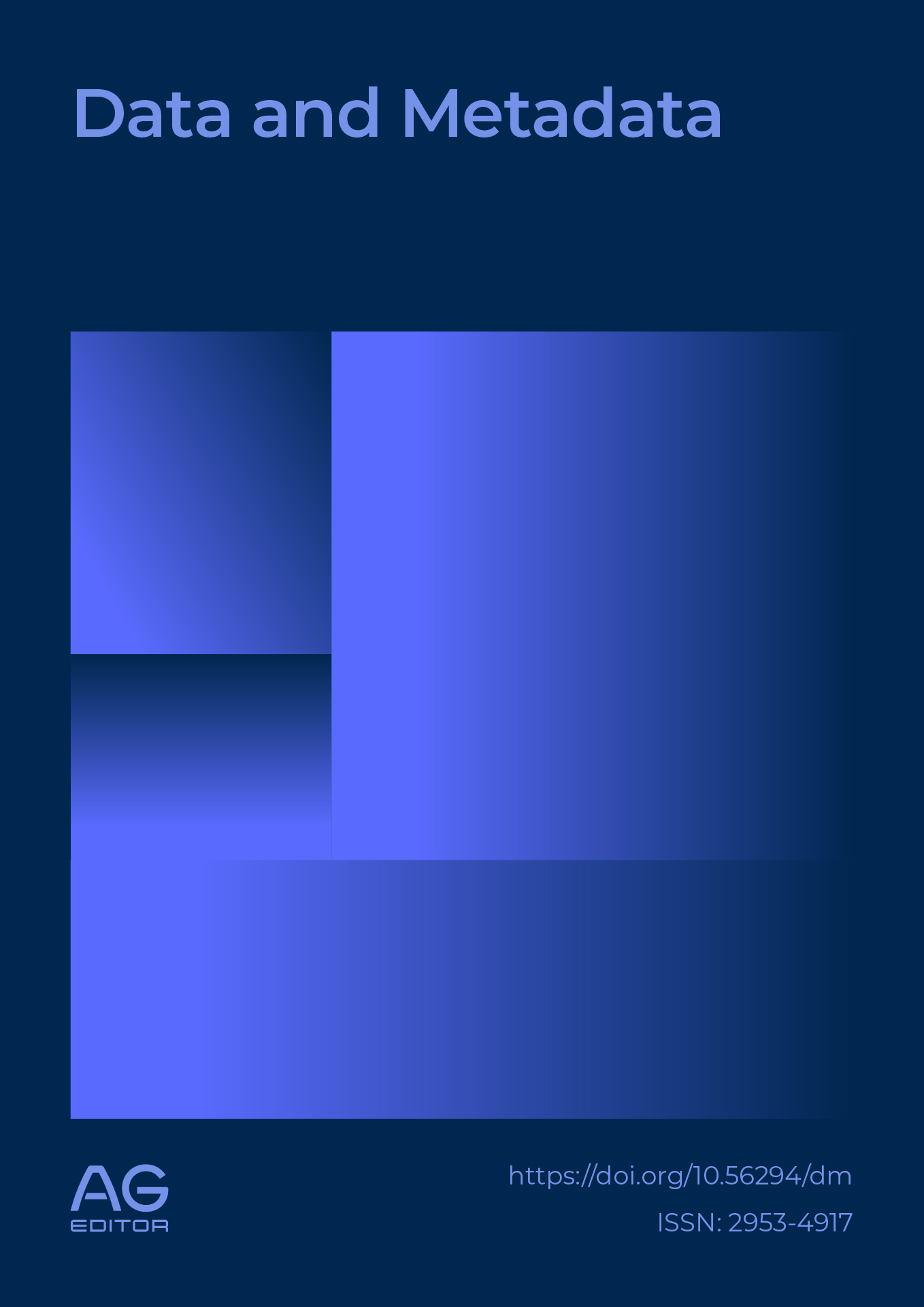Characterization of the scientific output on lithium batteries through SciVal topic analysis
DOI:
https://doi.org/10.56294/dm20225Keywords:
Lithium Ion, Lithium-Ion Batteries, Chemical EngineeringAbstract
Introduction: in the context of the depletion of fossil fuels and the threat of climate change, countries are committed to a change in the energy paradigm, where lithium-ion batteries are at the technological frontier, and their production has become massive in the last decades.
Objective: to characterize the scientific production on lithium batteries through topic analysis of SciVal
Method: a bibliometric study on the scientific production published in Scopus regarding lithium batteries between 2017 and 2021. SciVal was used to analyze the conglomerate articles on “Lithium-ion Batteries; Lithium Ion; electrodes.” Indicators of production, citation, and collaboration were determined.
Result: 98 articles were published on this topic, where the most productive year in documents and citations was 2017 (%Ndoc=25,51 %; %Ncit=46,53). 65,3 % of the articles were registered in the "Materials Science" area and 51 % within the "Chemistry" area. 2 % of the articles were found in the 1 % of the most cited, and 27,5 % presented international collaboration. China (Ndoc=64), Japan (Ndoc=)20, and the United States (Ndoc=8) concentrated most of the scientific production. China Three Gorges University was the most productive institution (Ndoc=11).
Conclusions: the scientific production on lithium batteries was mainly concentrated in first quartile journals, with the articles responding to the areas of materials science and chemistry. There was a high rate of international collaboration, however, a low university-business collaboration
References
1. Zícari J, Fornillo B, Gamba M. El mercado mundial del litio y el eje asiático. Dinámicas comerciales, industriales y tecnológicas (2001-2017). Polis Santiago 2019;18(52):186–203. http://dx.doi.org/10.32735/s0718-6568/2019-n52-1376
2. López CB, Tenés ML, Tafalla MLA. Electroquímica en la era de la sostenibilidad: baterías de ión litio y vehículos eléctricos [Internet]. V Encuentro de Ingeniería de la Energía del Campus Mare Nostrum. http://hdl.handle.net/10201/113064
3. Fornillo B, Gamba M. Industria, ciencia y política en el Triángulo del Litio. Ciencia, Docencia y Tecnol. 2019; 30(58).
4. Kavanagh L, Keohane J, Garcia Cabellos G, Lloyd A, Cleary J. Global Lithium Sources—Industrial Use and Future in the Electric Vehicle Industry: A Review. Resources 2018 17;7(3):57. https://doi.org/10.3390/resources7030057
5. Merigó JM, Miranda J, Modak NM, Boustras G, de la Sotta C. Forty years of Safety Science: A bibliometric overview. Saf Sci 2019; 115:66–88. https://doi.org/10.1016/j.ssci.2019.01.029
6. Liu J, Li J, Wang J. In-depth analysis on thermal hazards related research trends about lithium-ion batteries: A bibliometric study. J Energy Storage. 2021; 35:102253. https://doi.org/10.1016/j.est.2021.102253
7. Zyoud SH, Waring WS, Sweileh WM, Al-Jabi SW. Global Research Trends in Lithium Toxicity from 1913 to 2015: A Bibliometric Analysis. Basic Clin Pharmacol Toxicol. 2017; 121(1):67–73. https:/doir.org/10.1111/bcpt.12755
8. SciVal Support Center. Metrics in SciVal – what are they and what are their strengths and weaknesses? 2021. https://service.elsevier.com/app/answers/detail/a_id/13936/supporthub/scival/p/10961/
9. Dos Santos JRN, Alves ICB, Marques ALB, Marques EP. Bibliometric analysis of global research progress on electrochemical degradation of organic pollutants. Environ Sci Pollut Res. 2022; 29(36):54769–81. https:/doir.org/10.1007/s11356-022-19534-y
10. Lan J, Wei R, Huang S, Li D, Zhao C, Yin L, et al. In-depth bibliometric analysis on research trends in fault diagnosis of lithium-ion batteries. J Energy Storage. 2022; 54:105275. https://doi.org/10.1016/j.est.2022.105275
11. Niebles-Nunez W, Niebles-Nunez L, Babilonia LH. Energy Financing in Colombia: A Bibliometric Review. Int J Energy Econ Policy. 2022;12(2):459–66. https://doi.org/10.32479/ijeep.12819
12. Cheng X, Liu H, Yuan H, Peng H, Tang C, Huang J, et al. A perspective on sustainable energy materials for lithium batteries. SusMat. 2021; 1(1):38–50. https://doi.org/10.1002/sus2.4
13. Wu F, Maier J, Yu Y. Guidelines and trends for next-generation rechargeable lithium and lithium-ion batteries. Chem Soc Rev 2020; 49(5):1569–614. https://doi.org/10.1039/C7CS00863E
14. Malik Basharat A, Mushtaq M. Citations in chemical engineering research: factors and their assessment. Ann Libr Inf Stud 2020; 67:36–44.
15. Murugan M, Saravanan A, Elumalai PV, Murali G, Dhineshbabu NR, Kumar P, et al. Thermal management system of lithium-ion battery packs for electric vehicles: An insight based on bibliometric study. J Energy Storage 2022; 52:104723. https://doi.org/10.1016/j.est.2022.104723
16. Barberón A. Litio, ciencia y tecnología en Latinoamérica: hacia un regionalismo estratégico. Rev del Obs Digit Latinoam Ezequiel Zamora. 2022; 5(1):e1841.
17. Wali SB, Hannan MA, Ker PJ, Rahman MA, Mansor M, Muttaqi KM, et al. Grid-connected lithium-ion battery energy storage system: A bibliometric analysis for emerging future directions. J Clean Prod 2022; 334:130272. https://doi.org/10.1016/j.jclepro.2021.130272
Published
Issue
Section
License
Copyright (c) 2022 Maria Carla Fernández Delgado, Julio Alberto Ramírez Mendoza, Alejandro Luis Cisnero Piñeiro (Author)

This work is licensed under a Creative Commons Attribution 4.0 International License.
The article is distributed under the Creative Commons Attribution 4.0 License. Unless otherwise stated, associated published material is distributed under the same licence.




